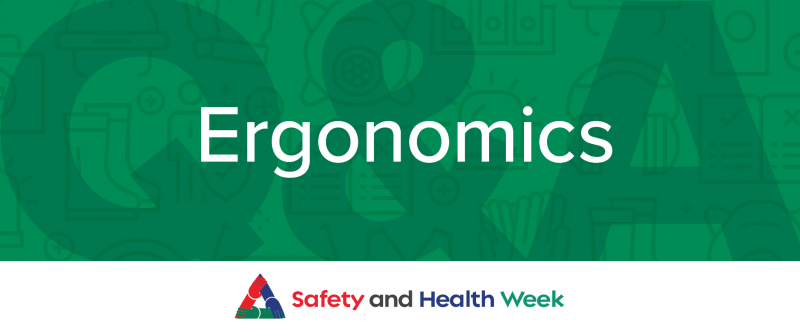About
About the Alliance
News and Events
Membership
Membership Types
Member Highlights
Services
Safety Assessments + Consultations
Advisor Services
Leadership and Psychological Safety Services
Training
CATALOG AND UPCOMING CLASSES
Resources
By Type
OHS Competency Tools and Framework
COR / OSSE
Getting Certified
Certification Tools & Training
Recognition & Awards
Navigation
Member Highlights:
Safety Assessments + Consultations: Air Quality Assessment, Combustible Dust Assessment, Confined Spaces Assessment, Critical Incident Response Services, Ergonomics, Machine Safeguarding Assessment, Noise Hazards | Surveys and Testing Services
Advisor Services: Safety Needs Analysis | GAP Analysis, Safety Program Support (SPS) | Safety Compliance Support (SCS)
Leadership and Psychological Safety Services: Mental Health and Wellness at Work, Leadership Training and Coaching, Respectful Workplace Support
By Type: Checklists, Guidebooks, Presentations, Quick Reference Cards, Safety Awareness Posters, Safety Videos, Templates, Toolbox Talks, Webinars
OHS Competency Tools and Framework:
Getting Certified: Steps to OSSE Certification, COR for Small Business, Safety Needs Analysis | GAP Analysis, COR / OSSE Small Business Referral Program, Certified OSSE/COR External Auditors
Certification Tools & Training: OSSE/COR Audit Tools, OSSE/COR Reference Materials, Certified OSSE External Auditor Training, OSSE/COR Internal Auditor Training
12
Months
of Safety
of Safety
October 2025
Ergonomics
Ergonomics is the scientific discipline focused on designing and arranging environments, products, and systems to fit the capabilities and needs of people. It aims to optimize human well-being, comfort, and performance by reducing physical and mental stress. By considering factors such as posture, movement, and the interaction between humans and their surroundings, ergonomics seeks to enhance efficiency, safety, and overall user satisfaction.
Basic Training
Course
Ergonomics is concerned with the “fit” between the user, equipment and environment. Ergonomics takes into account users’ capabilities and limitations to ensure tasks, functions, information and the environment suit each user. This course provides information to managers, supervisors and employees on proper ergonomic design to prevent repetitive strain injuries and other musculoskeletal disorders.
Course
Ergonomic design is necessary to prevent repetitive strain injuries and other musculoskeletal disorders, which can develop over time and can lead to long-term disability. This course builds on the fundamentals of Ergonomics and assists managers, supervisors, and employees in implementing a musculoskeletal injuries/disorder reduction program.
Videos & Webinars
ErgonomicsHealth and Safety Resources and Tools
Checklist
If employees work from home, it is the employer’s responsibility to ensure their health and safety.
Service
Ergonomic and Human Factors Assessments Industrial (Plant) and Office Ergonomics Choose from a range of office and industrial ergonomics assessments and services. Pain and discomfort are clear signals when a worker has stayed in an uncomfortable or awkward position too long. If an uncomfortable or awkward position is required to do the job, workers are […]
Toolbox Talk
Ergonomics works to reduce the risk of musculoskeletal injuries (MSI), including damage to muscles, bones or joints through designed workplaces, equipment, systems, and work. On average, MSI claims are 34% of all WorkSafeBC claims. From 2011 to 2020, that was an average of 17,891 claims per year.
Quick Reference Card
Has been present ever since human beings began interacting with the environment. Ergonomics actually emerged as a scientific discipline in the 1940s due to the technological advances of World War II
Poster tips for stretches that can be done at any workstation throughout during periodic wellness breaks to counter stiffness from static work and potentially limit risk of sprains or strains in more active jobs.
Guidebook
The Manufacturing Safety Alliance of BC is proud to introduce the MSI Prevention Guide, a source of guidance to an organization in implementing an ergonomics program at their workplace.
Toolbox Talk
A musculoskeletal injury (MSI) is an injury or disorder of the muscles, tendons, ligaments, joints, nerves, blood vessels or related soft tissue, including a sprain, strain, and inflammation, which may be caused or aggravated by work. Well-known MSIs include sprains and strains, carpal tunnel syndrome, bursitis, trigger finger, white finger diseases, and epicondylitis (tennis elbow).
News & Blog Articles
Who does this impact? WorkSafeBC has announced that in 2024, as part of their Planned Inspections Initiative, they will be focusing inspections on the following manufacturing classification units (CUs). Historically, workers in these CUs are at higher risk for serious injury....
3 safety tips: Ergonomics best practices for manufacturing
February 18, 2020
Ergonomics goes beyond stretching programs or choosing the right chair. It is an important strategic consideration. In the manufacturing sector, employees are especially vulnerable to developing musculoskeletal injuries (MSIs) due to several factors specific to their occupations. Risk factors such...
About MSABC
Board & Governance
Contact Us





